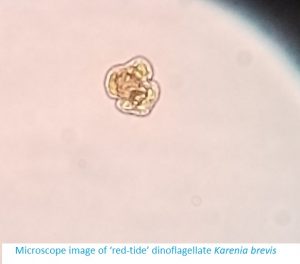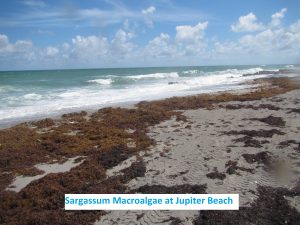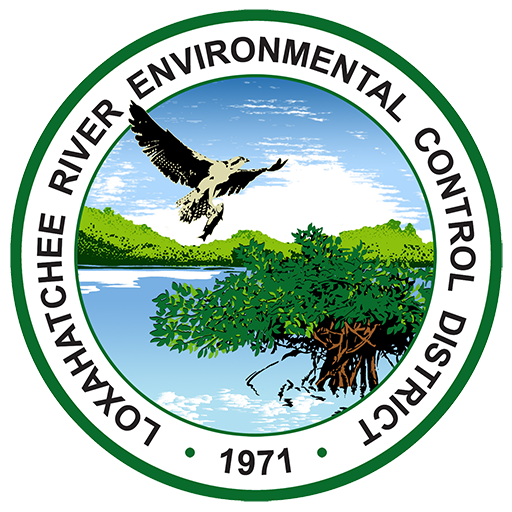The term algae is used to describe aquatic photosynthetic organisms that can live in freshwater or marine environments. Algae can be visible to the naked eye growing on stream banks or ocean bottom (‘benthic algae’) or microscopic living in the water column (‘phytoplankton’). Small amounts of algae can be beneficial providing food and/or shelter to organisms. However, some algae can produce toxins that can have harmful effects to people and aquatic organisms. In high concentrations, other non-toxic algae can deplete oxygen in the water or smother seagrass and corals. These toxic algae events can be influenced by rainfall and minimum flow levels.


Red Tide Event
In October 2018, there was a ‘Red Tide’ event on the east coast of Florida where high concentrations marine phytoplankton (Karenia brevis) washed in along the beaches and Loxahatchee River estuary. Click here to access the detailed study of the 2018 red tide event published in Harmful Algae. The Loxahatchee River District along Florida Fish and Wildlife Conservation Commission (FWC), Mote Marine Lab, Palm Beach County and Martin County collected and analyzed water samples to monitor conditions. LRD collected surface water samples to analyze for chlorophyll content and sent samples to Mote Marine laboratory to enumerated Harmful Algal Bloom (HAB) species. Click here to download 2018 Red Tide Sample Data
For additional information, please see:
- Florida Department of Environmental Protection (FDEP)’s Algal Bloom Dashboard https://floridadep.gov/AlgalBloom
- Florida Fish and Wildlife Conservation Commission (FWC)’s Red Tide Status https://myfwc.com/research/redtide/statewide/
- National Oceanographic and Atmospheric Administration (NOAA)’s reports and forecasts https://oceanservice.noaa.gov/hazards/hab/gulf-mexico.html
- Mote Marine Laboratory https://mote.org/pages/florida-red-tide1
